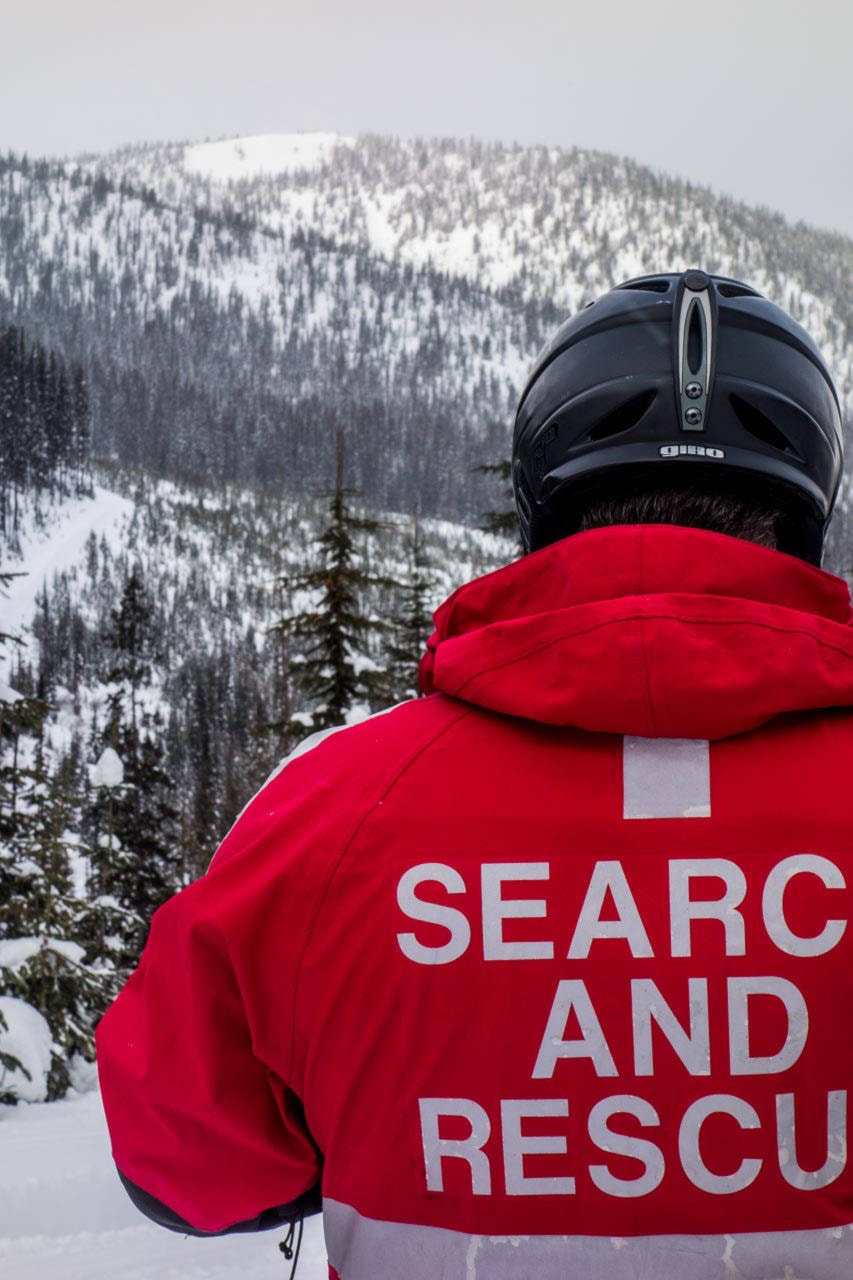Recently, Fernie Search and Rescue’s (SAR) rope rescue team practiced team rope training on a high angle, snowy slope in the dark. The training session was one of several that SAR’s volunteer members participate in to certify in various technical rescue disciplines. The team of 10, along with their five members in training, opted to train in the most challenging circumstances possible in order to best prepare for the breadth of conditions faced in reality.
Fernie SAR is a wilderness emergency response group that operates through Emergency Management BC. Originating in the 1970s and becoming an official society in 1993, the group has responded to hundreds of incidents since its conception. A number of agencies are able to activate the group, including Fire and Rescue, the RCMP, British Columbia’s ambulance service, local municipalities, or the Department of National Defense.
Due to the surrounding area consisting of class five rapids, deep valleys, fast flowing waterways, and steep terrain, SAR is specialized in dealing with a variety of of rescues depending on the topography and nature of the incident. The entire SAR team consists of 30 members, all possessing or training for their Ground Search and Rescue certification. Most members also certify in one or more of the technical teams.
“Fernie Search and Rescue has a number of technical rescue teams: swift water rescue, avalanche rescue, ice rescue, heli longline (CDFL), canine and rope rescue. The rope rescue team is responsible for high angle rescues requiring complex rope systems,” said Simon Piney, head of Fernie Search and Rescue.
According to Piney, the team also undertakes training for non urban emergency care, helicopter rescue, ATV operations, snowmobile operations, chainsaw operations, and a few others. Each of their training sessions end in a certification, whether it is issued in house or by the province.
In the winter, SAR’s most common calls involve snowmobiler trauma, cold water immersion, avalanches, rider trauma, or lost persons. In the summer, calls most often regard trauma related injuries resulting from outdoor activities such as biking, hiking, fishing and rafting.
“Our winter message is pretty standard. Make sure when traveling in the backcountry you have the necessary equipment and training to perform a companion rescue, have the means to communicate with emergency teams if needed, have sufficient equipment to survive a night outdoors and provide first aid, and leave a trip plan with someone responsible,” said Piney.
This year, SAR has already responded to calls involving an avalanche, a sledder in a tree well, stranded motorists in the backcountry, several lost or stuck sledders, and a long line rescue of three skiers stranded on a cliff. While none of the rescues executed this year involved a full rope rescue, ropes formed essential aspects of each situation and are often needed in rescues.
reporter@thefreepress.ca
Like us on Facebook and follow us on Twitter
